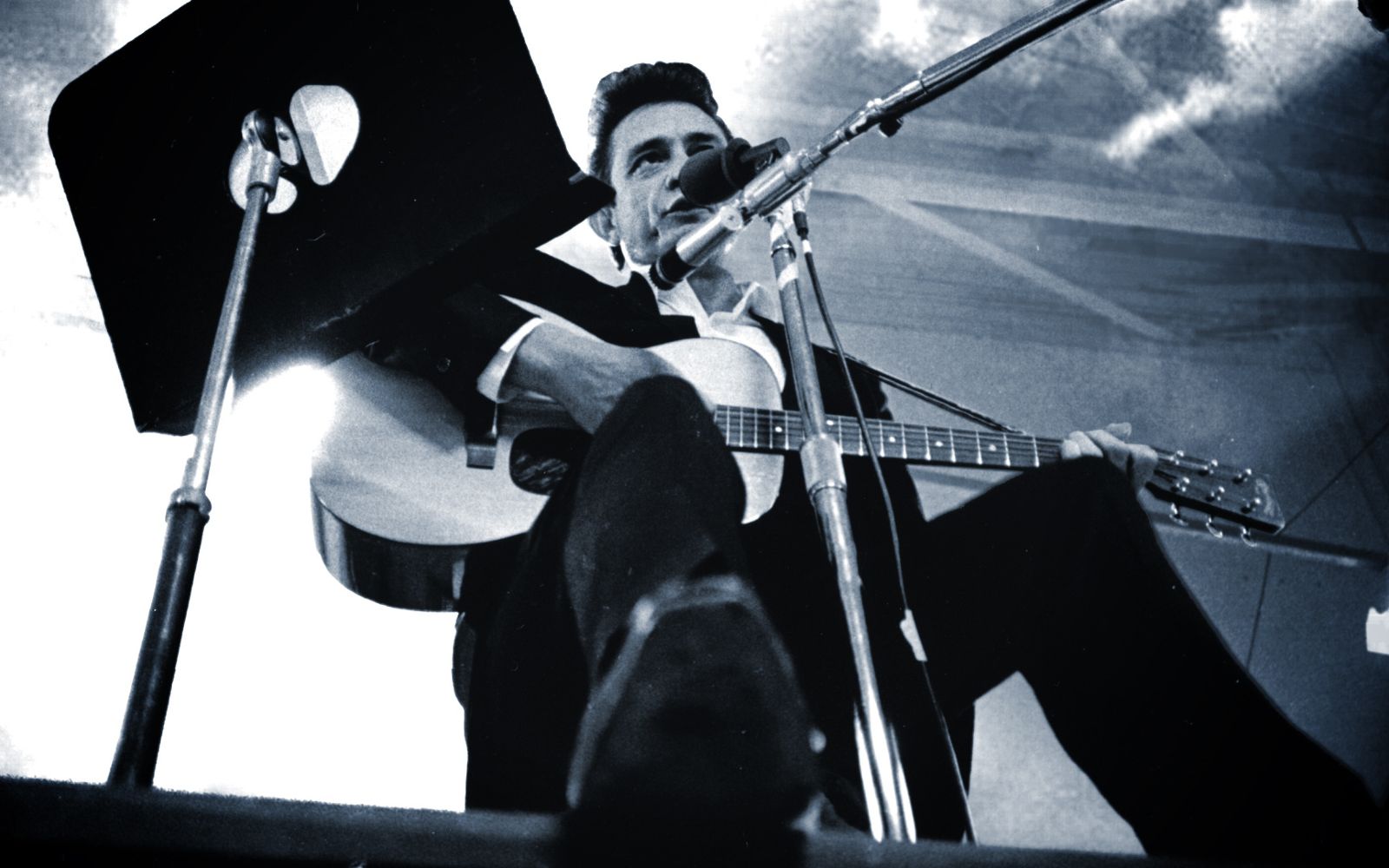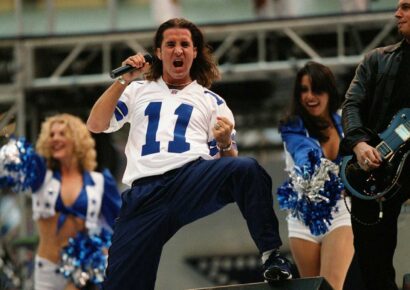Creativity is a fickle thing, we're all inspired by different things, while also forging our own paths towards our own sound.
Most of us begin our musical journey by covering our favourite songs, and this doesn’t end. Here’s 10 cover songs by professional musicians you mightn’t have known were covers!
The Animals – “House of the Rising Sun” (1964)
This iconic tune is actually a traditional folk song titled “Rising Sun Blues”, and though the original author is unknown, early renditions date back to the 16th century, with the oldest known recording of the song, by Tom Clarence Ashley and Gwen Foster, dating back to 1933.
Lead singer of The Animals, Eric Burdon said that he first heard the song in a club in Newcastle, sung by folk singer Johnny Handle.
They were on tour with Chuck Berry at the time and decided to include it in their set as a way differentiate themselves from other acts.
Their version was recorded in one take in May of 1964, starting with that famous A minor chord arpeggio by Hilton Valentine, and featuring Burdon’s gravelly lead vocals.
Described as the first folk-rock hit, The Animals reached number one in the UK, US and Canada with their rendition.
Read more gear features, artist interviews and how-to columns here.
Blondie – “The Tide Is High” (1980)
While gaining popularity in the 80s through Blondie’s foray into reggae, “The Tide Is High” was originally written by Jamaican group The Paragons in 1967.
Debbie Harry and Chris Stein heard the song on a compilation tape they bought in London and fell in love with its infectious melody.
They thought it would be the perfect song to lead their album Autoamerican (1980) and it did just that, landing them their third number one single on the US Billboard Hot 100.
In a 2022 interview, Stein revealed that “The Tide Is High” was in fact his favourite song Blondie had ever recorded.
Enough said.
Sinead O’Connor – “Nothing Compares 2 U” (1990)
While it may be common knowledge to many fans, this heartbroken ballad was originally written and demoed by Prince before its release with his side project The Family in 1985.
This version leant more into the neo-soul style and didn’t really gain popularity until O’Connor released her impassioned take, on her second studio album I Do Not Want What I Haven’t Got in 1990.
It was a worldwide hit, topping charts in multiple countries, including O’Connor’s native Ireland, Australia, Germany and the United States, and was certified platinum in Austria and in the UK.
There have been mixed reports over whether Prince liked her version or not, but regardless, there’s no doubt Sinead made it her own.
Soft Cell – “Tainted Love” (1981)
First written by Ed Cobb and recorded by Gloria Jones in 1964, this Motown-inspired jam featured a fast tempo, superb back-up vocals, and an electric lead guitar from the iconic Glen Campbell himself.
“Tainted Love” was the b-side for Jones’ 1965 single “My Bad Boy’s Comin’ Home”, which was a bit of a flop if I’m being honest, failing to chart in the US or the UK.
British electronic duo Soft Cell swapped the guitars for synthesizers in September of 1981, taking it to the top of the charts and selling over a million copies in the UK that year.
Joan Jett & the Blackhearts – “I Love Rock ‘n’ Roll” (1981)
In 1975, a British rock band called the Arrows recorded and released “I Love Rock ‘n’ Roll” on RAK Records as a b-side, and the song was actually a response to the Rolling Stones’ “It’s Only Rock n’ Roll But I Like It” from the year before.
In 1976, While watching their weekly television series (titled Arrows), Joan Jett saw the band performing the song, while on tour with her group the Runaways, and it wasn’t long before manager Kim Fowley had them learning it.
Jett recorded a version of it in 1979, alongside Steve Jones and Paul Cook of the Sex Pistols, and it was released on vinyl as a B-side to “You Don’t Own Me” (which was also a cover song funnily enough).
A couple years later it was re-recorded with the Blackhearts, and released as a single, where it would become a Billboard Hot 100 number-one for seven weeks.
Johnny Cash – “Ring of Fire” (1963)
Johnny Cash has certainly had his fair share of hits, and there aren’t many bigger than “Ring of Fire”.
Releasing in 1963, it sat at the top of the country chart for seven weeks, became certified gold by the RIAA in 2010, and has sold over 1.2 million digital copies.
Rolling Stone named “Ring of Fire” the number one greatest country song of all time, and in 1999, it was inducted into the Grammy Hall of Fame.
What many people may not know however, is that Cash didn’t write the song… or record the first version of it.
It was written by non-other than his second wife, June Carter Cash, with the help of songwriter and Hank Williams’ former manager, Merle Kilgore.
Titled “(Love’s) Ring of Fire” the original recording was by June’s sister, Anita Carter on her 1962 album Folk Songs Old and New.
The two weren’t married to each other at the time, and June actually wrote the song about falling for Cash, while they were touring together.
He reportedly had a dream about the song, in which he heard ‘Mexican horns’, so decided to re-record it and the rest is history.
Beyonce – “If I Were a Boy” (2008)
Originally performed by American singer BC Jean, and co-written alongside Toby Gad in 2008, This introspective pop ballad found success after Beyonce recorded her version that same year.
Jean presented the song to her record label at the time, hoping to include it in her debut 12-track album, but it was rejected, leading Gad to approach some established artists.
Known for writing and producing songs with the likes of John Legend and Fergie, Gad took ‘If I Were a Boy’ to Beyonce and she loved it.
She recorded her own version for her album I Am… Sasha Fierce with Gad at Roc the Mic Studios and Strawberry Productions in NYC, as well as GAD Studios in Ibiza.
It’s known that BC Jean was quite upset about the news that Beyonce had released a version of her song, and that she was first made aware of it by a stranger.
George Harrison – “Got My Mind Set on You” (1987)
This one was originally written by Rudy Clark and recorded by American R&B singer James Ray in 1962, under the title “I’ve Got My Mind Set on You”.
It’s reported that George Harrison’s first encounter with the song was while visiting his sister in the countryside of Illinois in 1963.
While there, he would frequent the various record stores, buying a variety of albums – eventually stumbling across Ray’s version.
In 1987 he began recording his rendition, at his home studio, and it was released later that year on his album Cloud Nine, through his label Dark Horse Records.
It was a smash hit, reaching number 1 in countries like Australia, Ireland, Canada and Belgium, and to this day is the last time a former Beatle has hit the top spot in the US Billboard Hot 100.
UB40 – “Red Red Wine” (1983)
UB40 released “Red Red Wine” on their cover album Labor of Love in 1993, and it was incredibly successful.
It found its way to the top of the US Billboard and UK Singles charts, as well as reaching number one in countries like Canada and New Zealand.
What some people might not know is that this reggae-pop tune is actually a Neil Diamond song, released in 1967 on his second album Just For You.
According to UB40’s former vocalist and trumpet player Terence Wilson (better known by his stage name Astro) the group was only familiar with Tony Tribe’s 1969 version and had no idea Neil Diamond was the original singer.
While UB40’s rendition has a lighter reggae style, Diamond’s was more of a sombre acoustic ballad – both great versions nonetheless.
Aretha Franklin – “Respect” (1967)
While this empowering tune may have helped turn Aretha Franklin into a superstar, it was originally written and recorded by none other than the king of soul – Otis Redding.
Redding’s version was included on his third studio album, Otis Blue, which came out in September of 1965, and was incredibly successful (even outside of his usual fanbase).
Franklin had been performing a version of “Respect” in her live shows for years prior, but in 1967, with the help of producer Jerry Wexler, they recorded it at the famous Atlantic Studios in NYC.
The two versions are completely different, and some key lyrical changes helped flip the narrative all together; what resulted was Franklin’s version becoming a feminist and civil rights anthem during the 70s.
Considered to be one of the best R&B songs of all time, it received two Grammys in 1968, and was inducted into their Hall of Fame in 1987.

